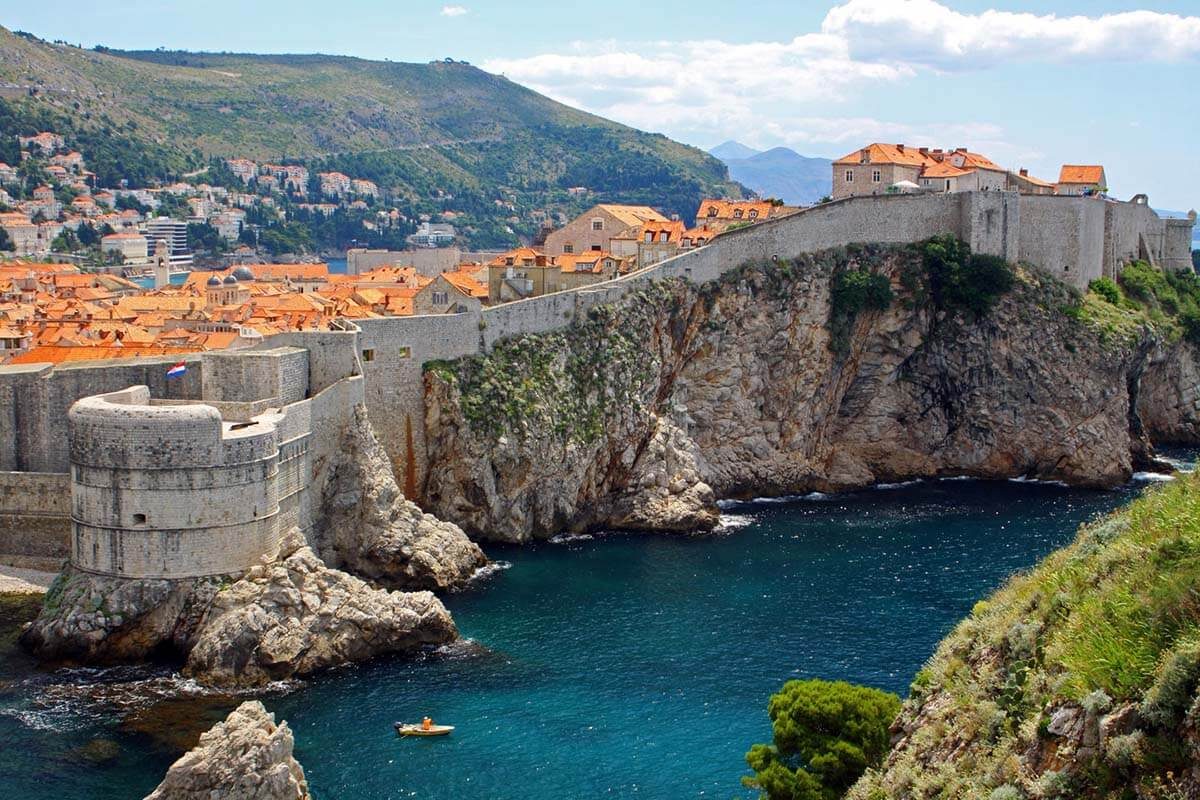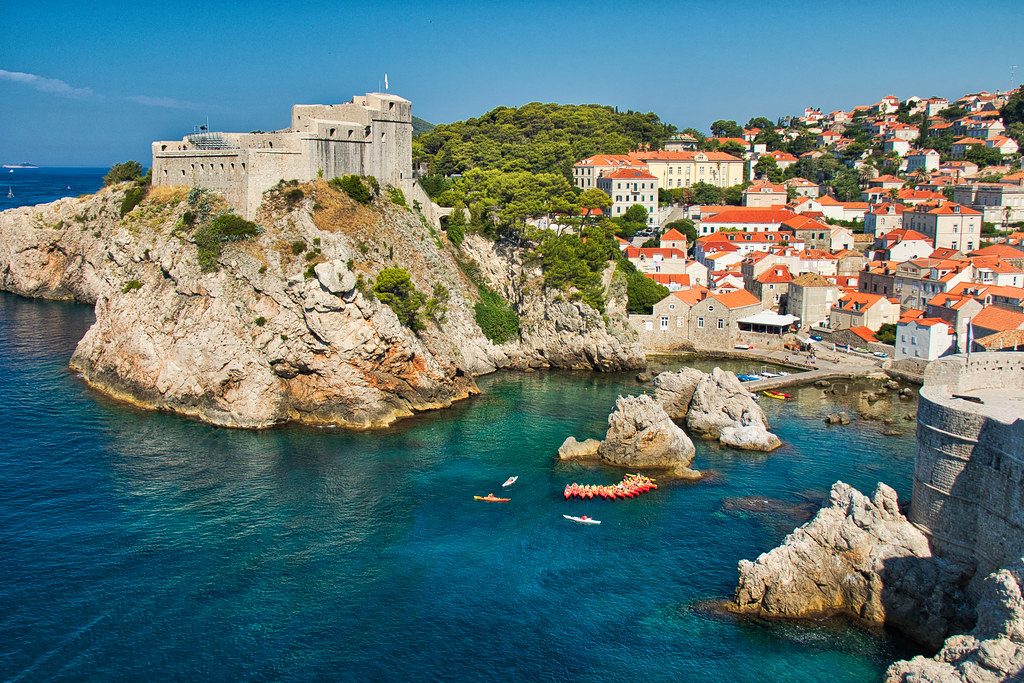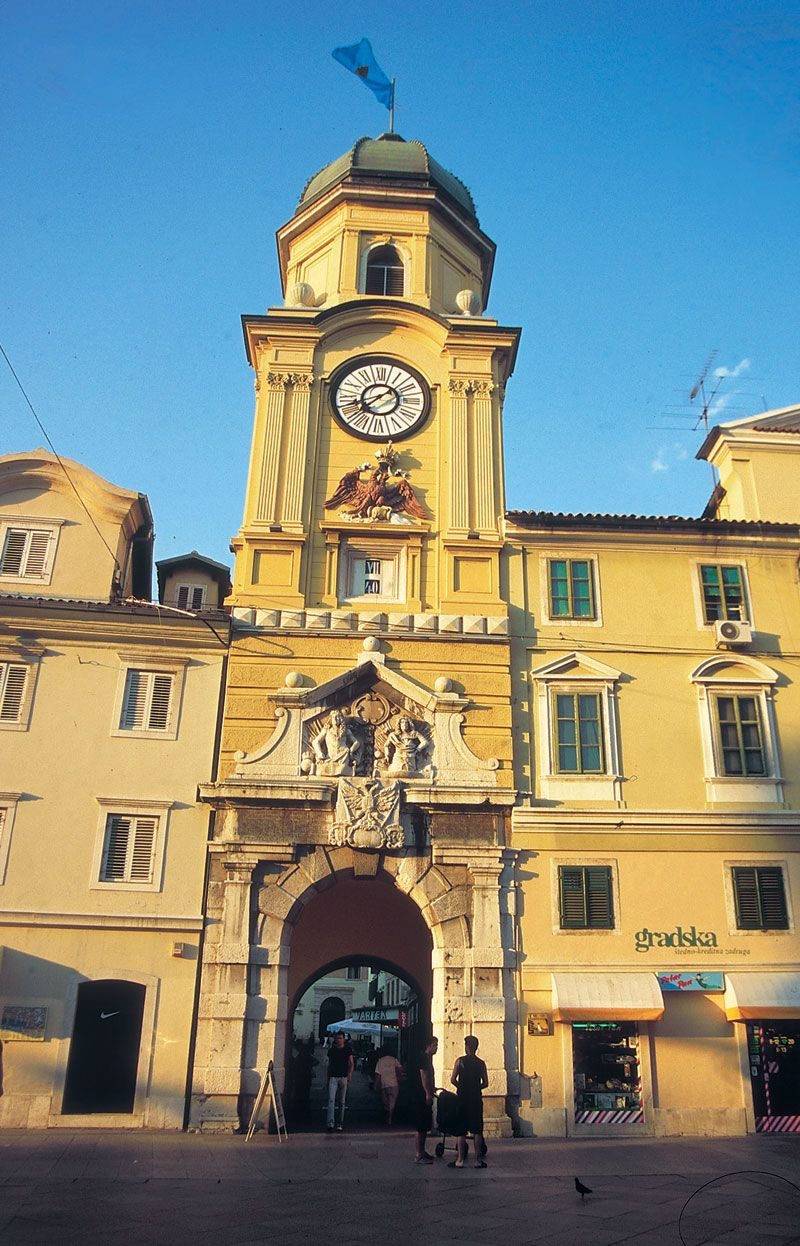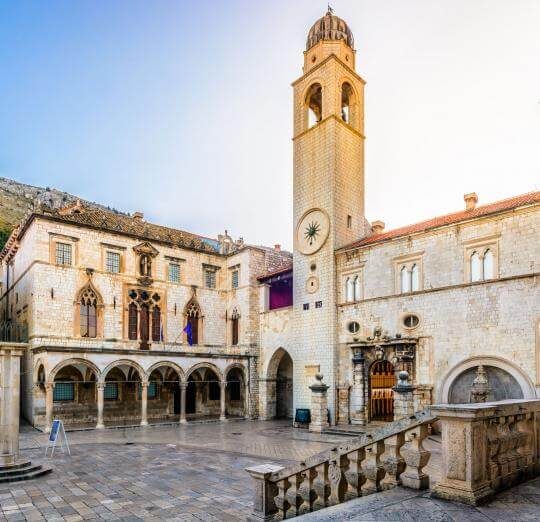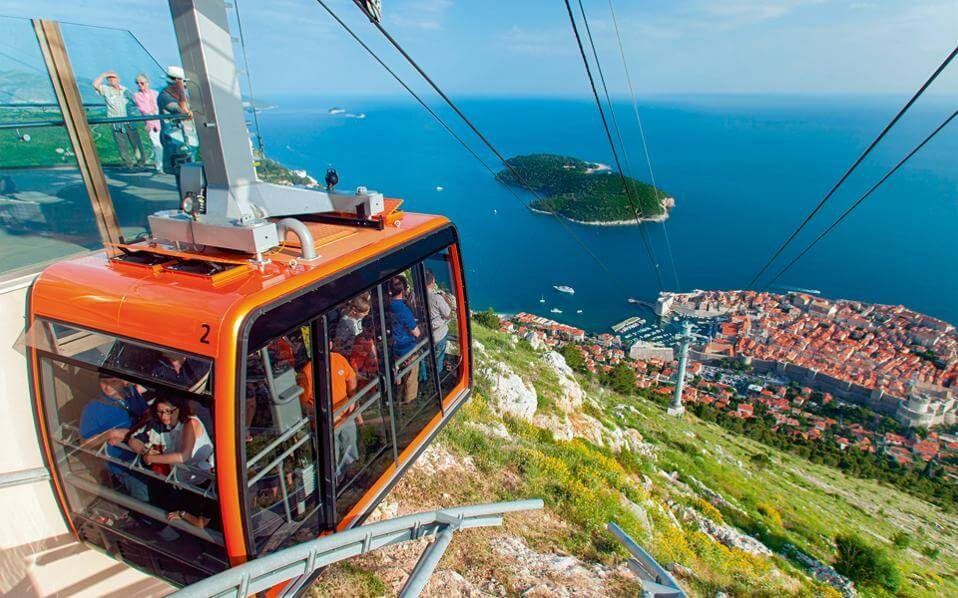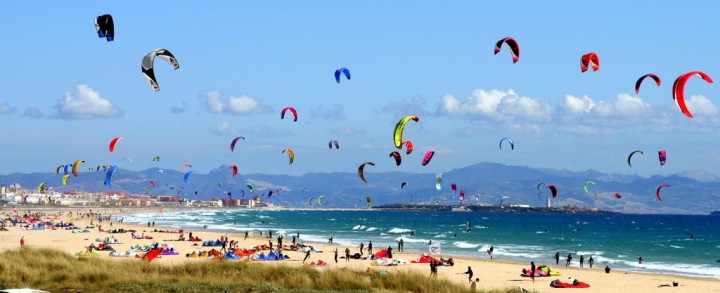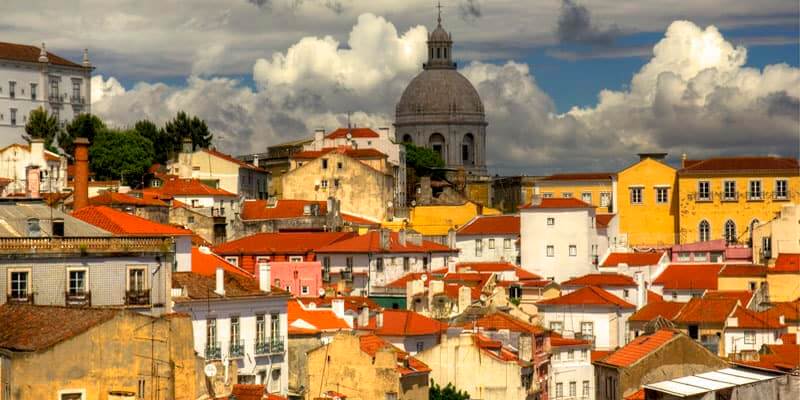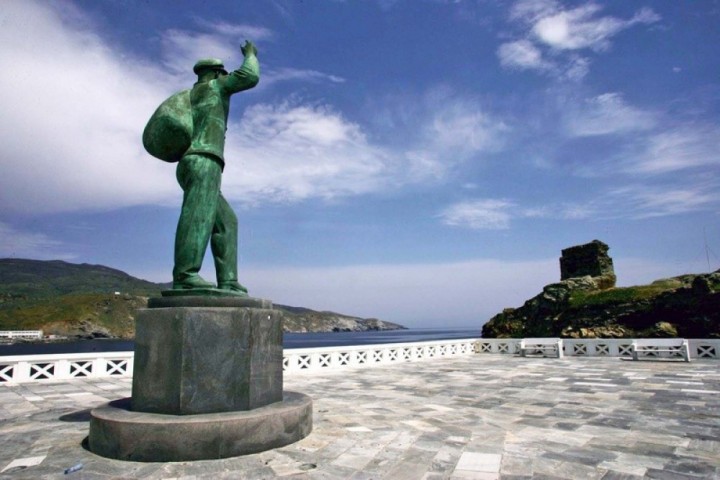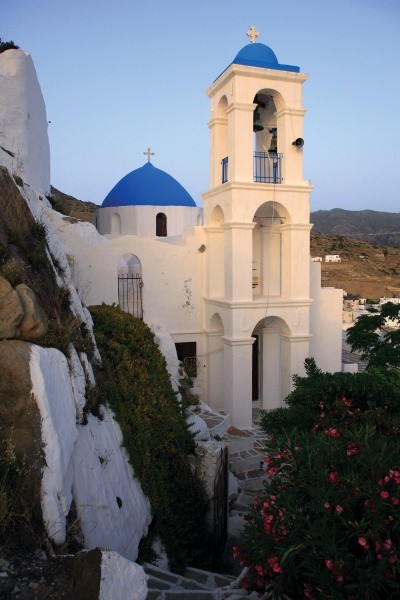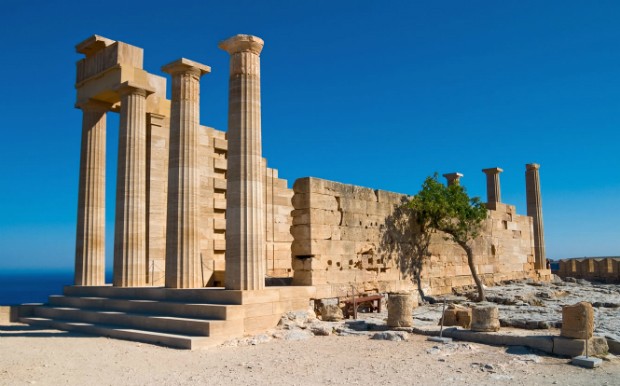The Walls of the Old Town
The Walls of Dubrovnik are considered the most completed and perhaps the largest of Europe. They were built from the 8th to the 16th century in order to protect Stari Grant from any kind of besiegers. You should walk on the fortifications on a 2km long path that looks like being on a limbo above the Adriatic sea. A little further away, it’s the Tower of St. Lucas that protected the entrance of the port. Make a stop at the 16th century semicircular fortress of St. John to visit the Aquarium and the Nautical Museum. Ragusa, as it was called Dubrovnik in old times, was once a famous naval state with seagoing ships around the world!
The Fortress Lovrijenac
The Clock Tower
A symbol of the city in the central square of Lonza, the 31 m high Tower began to be built in 1444. Two wooden figures of soldiers, later replaced by bronze statues, undertook to ring the clock on the old 2000 kg bell. The locals named them Maro and Baro but eventually they got the nickname “zelenci”, which means green people, from the color given to them by the Adriatic salt.
Sponza Palace
It’s an impressive building of the 16th century that combines masterfully architectural elements of the Gothic and Renaissance era. In the past, it first housed the customs and then operated as a literary club made for the high society of the city that organised meetings on its elegant garden to discuss philosophical matters.Today, the historical archives of Dubrovnik are kept on the premises of the palace.
Dubrovnik Cable Car
At the height of 413 m above the city, the hill offers an amazing panorama of the city and the Adriatic which resembles a postcard! At the top stands the imposing Imperial that houses the War Museum. You can admire all this through a cable car that will offer you a unique view and an unforgettable experience.

